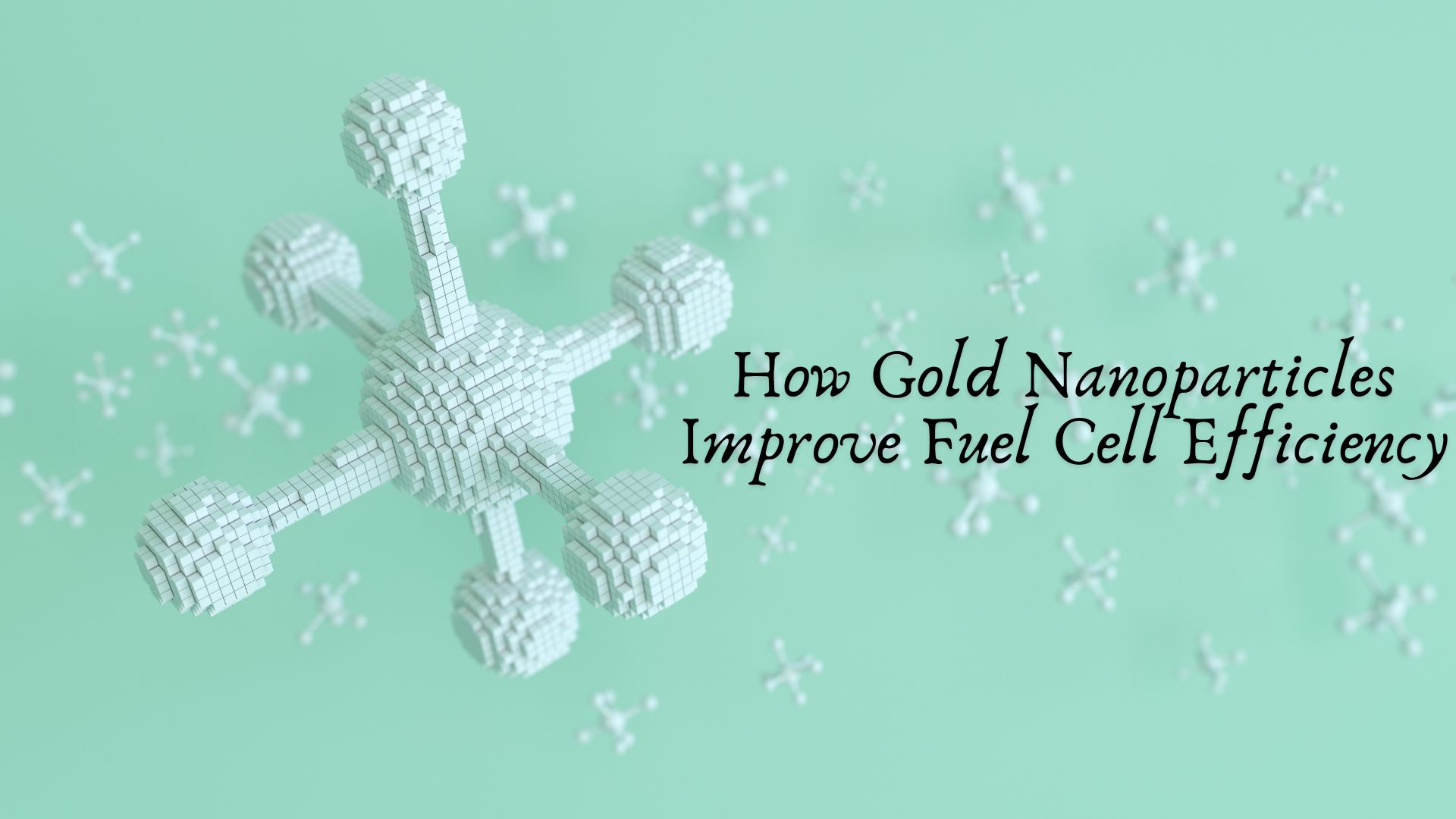Fuel cells are rapidly emerging as a clean, sustainable energy technology with the potential to revolutionize power generation across various sectors—from automotive to portable electronics and large-scale energy storage. One of the key challenges in maximizing the potential of fuel cells lies in improving their efficiency, durability, and cost-effectiveness. In recent years, gold nanoparticles (AuNPs) have garnered significant attention for their ability to enhance fuel cell performance. This article explores the role of gold nanoparticles in fuel cells, the mechanisms behind their efficiency-boosting capabilities, and the future outlook of this innovative approach.
Understanding Fuel Cells
Fuel cells generate electricity through an electrochemical reaction, typically involving hydrogen and oxygen. Unlike combustion-based engines, they produce water as a byproduct and emit no greenhouse gases if powered by pure hydrogen. The basic structure of a fuel cell consists of an anode, cathode, and electrolyte membrane.
However, traditional fuel cells face several limitations, including:
- Catalyst degradation over time
- High cost of platinum-based catalysts
- Limited catalytic activity
- Fuel crossover and poisoning effects
Researchers are investigating alternative materials to address these challenges—and gold nanoparticles have emerged as a promising candidate.
What Are Gold Nanoparticles?
Gold nanoparticles are extremely small particles of gold, typically between 1 to 100 nanometers in diameter. At this nanoscale, gold exhibits unique chemical, optical, and electrical properties that are not seen in its bulk form. These properties make AuNPs particularly effective as catalysts and conductive materials in energy systems.
How Gold Nanoparticles Enhance Fuel Cell Efficiency
Improved Catalytic Activity
One of the primary functions of a fuel cell catalyst is to facilitate the redox reactions that generate electricity. Traditionally, platinum is used for this purpose due to its high catalytic efficiency. However, gold nanoparticles can also act as effective catalysts, especially in alkaline fuel cells.
- Gold nanoparticles provide a high surface-area-to-volume ratio, which means more active sites for reactions.
- AuNPs can promote oxygen reduction reactions (ORR) and hydrogen oxidation reactions (HOR) in alkaline environments, making them a viable alternative or additive to platinum.
- When alloyed with other metals like palladium or platinum, gold nanoparticles enhance synergistic effects that improve overall reaction kinetics.
Resistance to CO Poisoning
Platinum-based catalysts are susceptible to poisoning by carbon monoxide (CO), a common contaminant in hydrogen fuel. Even small amounts of CO can significantly reduce fuel cell performance.
Gold nanoparticles exhibit exceptional resistance to CO poisoning, especially when used in bimetallic configurations (e.g., Au-Pd or Au-Pt). This allows the catalyst to maintain its activity over longer periods, improving the durability and efficiency of the fuel cell.
Enhanced Electrical Conductivity
Gold is an excellent conductor of electricity. When used as part of the electrode material or in the catalyst support structure, gold nanoparticles can:
- Improve electron transfer rates between the catalyst and the electrode
- Enhance power output and response time
- Reduce electrical resistance within the fuel cell
Thermal and Chemical Stability
AuNPs are highly stable under a wide range of operating conditions. They resist oxidation and degradation at high temperatures, which is critical for the long-term performance of fuel cells operating in harsh environments.
This stability reduces maintenance needs and extends fuel cell lifespan, both of which contribute to better cost-efficiency and reliability.
Lower Catalyst Loading
Thanks to their high catalytic efficiency, gold nanoparticles allow for reduced loading of precious metals like platinum. This leads to:
- Lower production costs
- Less dependence on rare materials
- More sustainable fuel cell designs
Applications of Gold Nanoparticles in Fuel Cells
Proton Exchange Membrane Fuel Cells (PEMFCs)
Although AuNPs are not widely used in traditional PEMFCs due to their lower activity in acidic environments, new formulations are being developed to make them more compatible. These include:
- Gold alloy catalysts with improved acid stability
- Protective coatings to enhance durability in low pH conditions
Alkaline Fuel Cells (AFCs)
Gold nanoparticles show excellent catalytic performance in alkaline media, making them ideal for AFCs. Their resistance to CO poisoning and ability to catalyze ORR and HOR efficiently make them strong candidates for replacing platinum.
Direct Methanol Fuel Cells (DMFCs)
In DMFCs, gold nanoparticles improve the oxidation of methanol and reduce catalyst poisoning, thereby boosting performance. When used with other materials like carbon nanotubes, their catalytic performance is further enhanced.
Challenges and Considerations
Despite their benefits, there are some challenges associated with the use of gold nanoparticles:
- High cost of gold compared to other materials (though less than platinum when used sparingly)
- Scalability issues in manufacturing uniformly sized and shaped nanoparticles
- Surface passivation, where the active sites become less reactive over time
Researchers are actively addressing these issues through techniques such as:
- Shape and size control via chemical synthesis
- Core-shell nanostructures to optimize performance
- Hybrid composites combining AuNPs with cheaper materials
Future Outlook
The integration of gold nanoparticles into fuel cell technology represents a significant step forward in enhancing energy conversion efficiency, reducing costs, and extending lifespan. Continued research in nanotechnology, surface chemistry, and materials science is expected to unlock even more benefits.
Key trends to watch include:
- Development of gold-based nanocomposites
- Wider adoption in commercial fuel cell systems
- Exploration of green synthesis methods for AuNPs
- Combination with AI and machine learning to design better catalysts
Conclusion
Gold nanoparticles are proving to be powerful enhancers of fuel cell efficiency, offering advantages in catalytic activity, stability, conductivity, and resistance to poisoning. Though challenges remain, ongoing innovations are steadily bringing gold nanoparticle-enhanced fuel cells closer to mainstream application. As the global demand for clean energy continues to rise, the role of nanotechnology—and gold nanoparticles in particular—will be pivotal in shaping the future of sustainable power generation.

